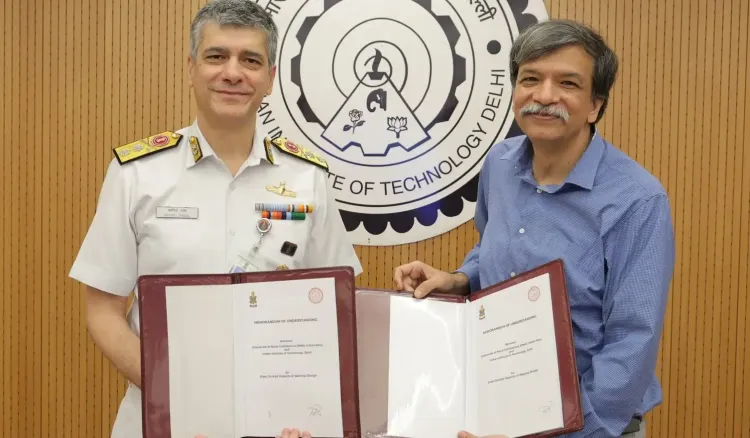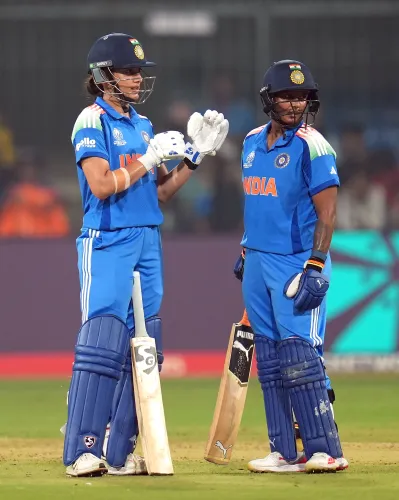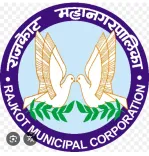What Does the Indian Navy's MoU with IIT Delhi Mean for Warship Design?

Synopsis
Key Takeaways
- Collaboration between the Indian Navy and IIT Delhi.
- Focus on enhancing crew comfort and efficiency.
- Research will integrate ergonomics and human factors.
- Comparative analysis with international standards.
- Potential impact on mercantile marine and habitability standards.
New Delhi, Oct 17 (NationPress) The Indian Navy has established a Memorandum of Understanding (MoU) with IIT Delhi to foster Subject Matter Expertise in crew-centred warship design, as announced on Friday.
Signed on October 16, the MoU states, “This collaboration offers a systematic, process-oriented method to enhance onboard habitability, allowing the Indian Navy to develop indigenous crew-centric standards and lessen dependence on external benchmarks.”
The agreement was formalized by Rear Admiral Arvind Rawal, Assistant Chief of Materiel (Dockyard & Refit) of the Indian Navy, and Prof. Rangan Banerjee, Director of IIT Delhi. As part of this MoU, researchers from IIT Delhi’s Department of Design will investigate the safety, efficiency, and habitability of various ongoing and upcoming construction projects and contribute insights into ship designs.
“The Indian Navy and IIT Delhi will collaborate with the primary goal of enhancing the Quality of Life (QoL) aboard Indian Naval vessels, which may also extend to the commercial marine sector and other Indian ethnicity-based habitability needs,” stated IIT Delhi in its press release.
The Institute will analyze current ship designs utilized by the Indian Navy and will conduct a comparative evaluation of these designs against global standards, considering safety, user experience, comfort, and other critical parameters.
Regarding the MoU with IIT Delhi, RAdm Arvind Rawal remarked, “This agreement represents a pivotal advancement in our mutual effort to transform Indian warships into vessels that are not only formidable in battle but also exemplary concerning crew comfort, efficiency, and habitability. Through this partnership, we are collaborating with one of the country’s leading academic institutions to cultivate expertise in crew-centric warship design.”
“This initiative employs a scientific, process-driven approach to habitability, integrating the fields of ergonomics, human factors, and design optimization into naval architecture,” he further added.
Prof. Rangan Banerjee, Director of IIT Delhi, expressed, “We are thrilled to partner with the Indian Navy to enhance the living conditions for our naval officers and crew using cutting-edge scientific design methodologies. This MoU will strengthen IIT Delhi’s existing collaborations with the Navy in underwater technology, electronics, and postgraduate programs in naval construction.”









